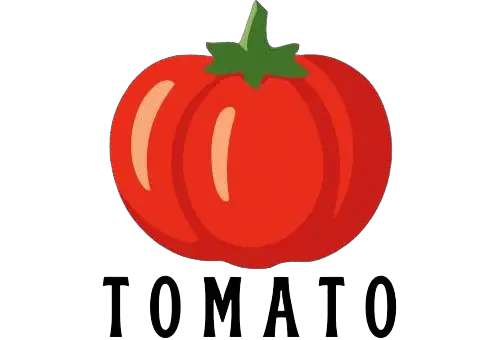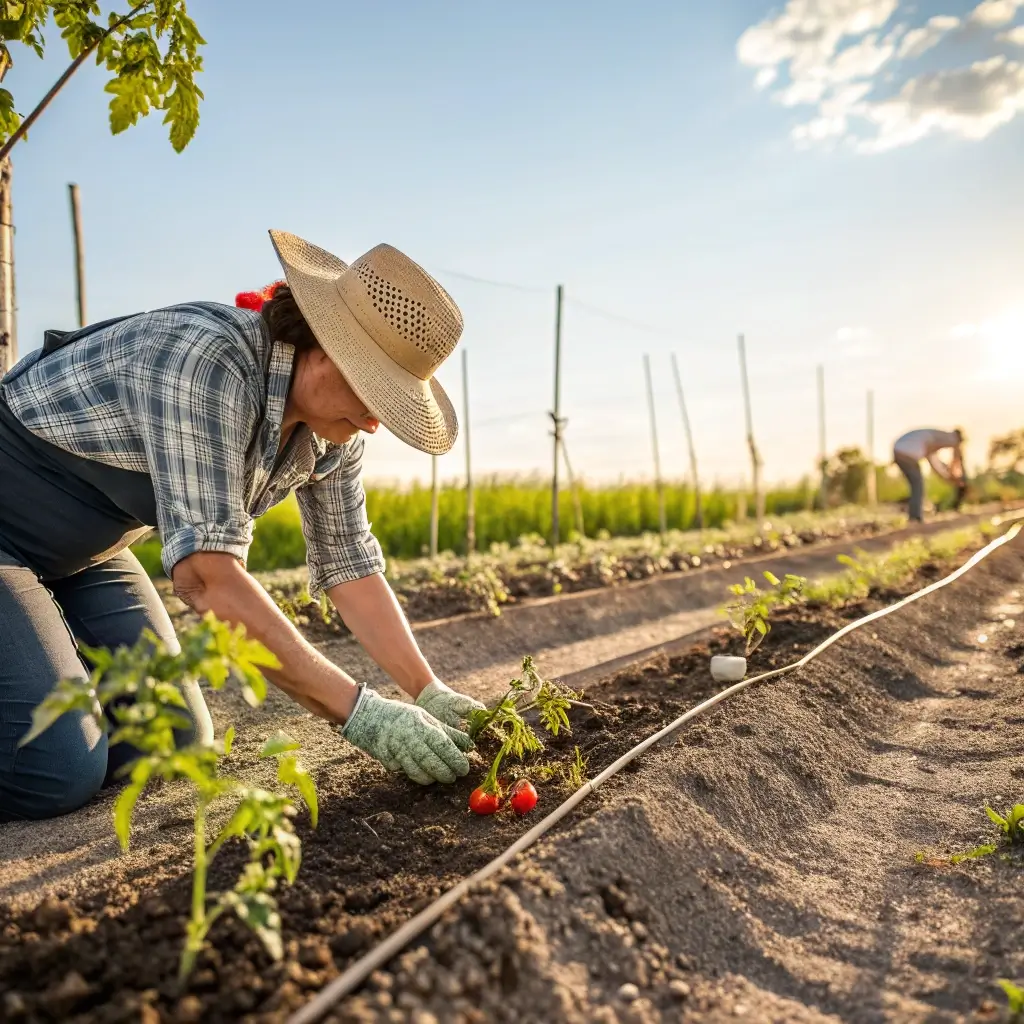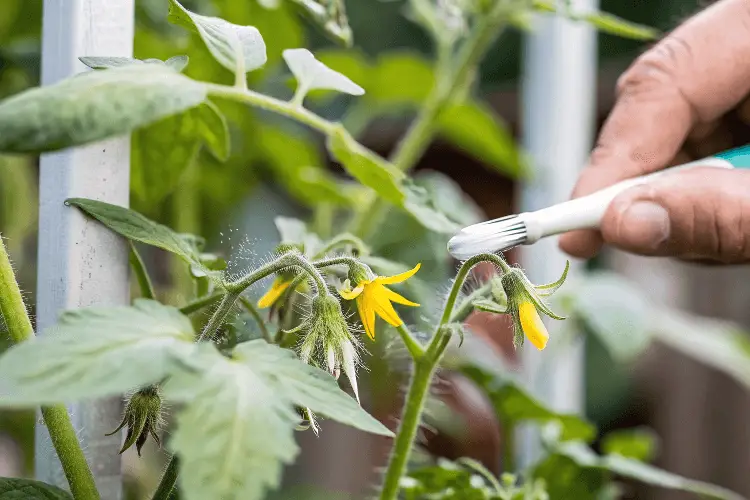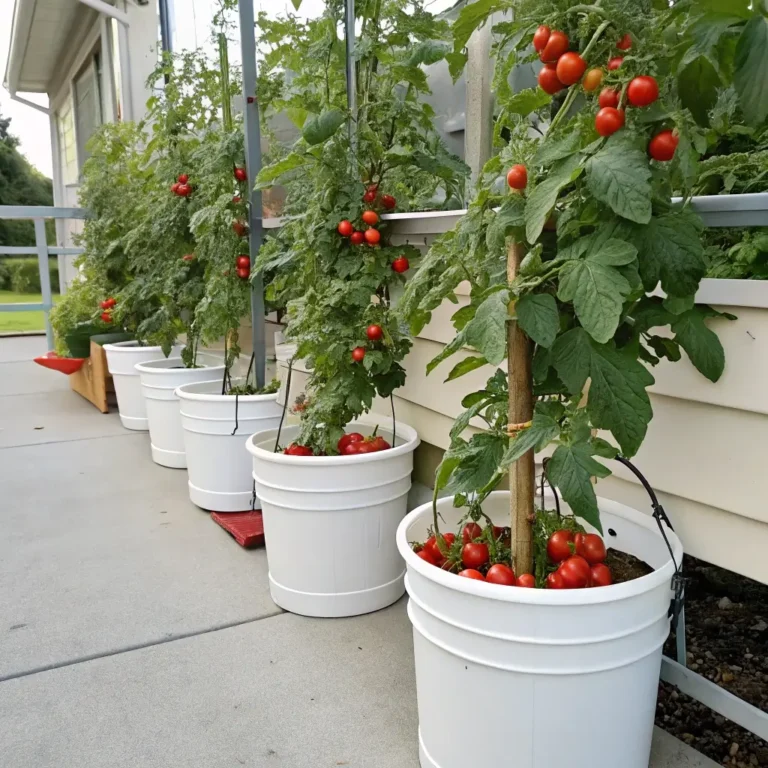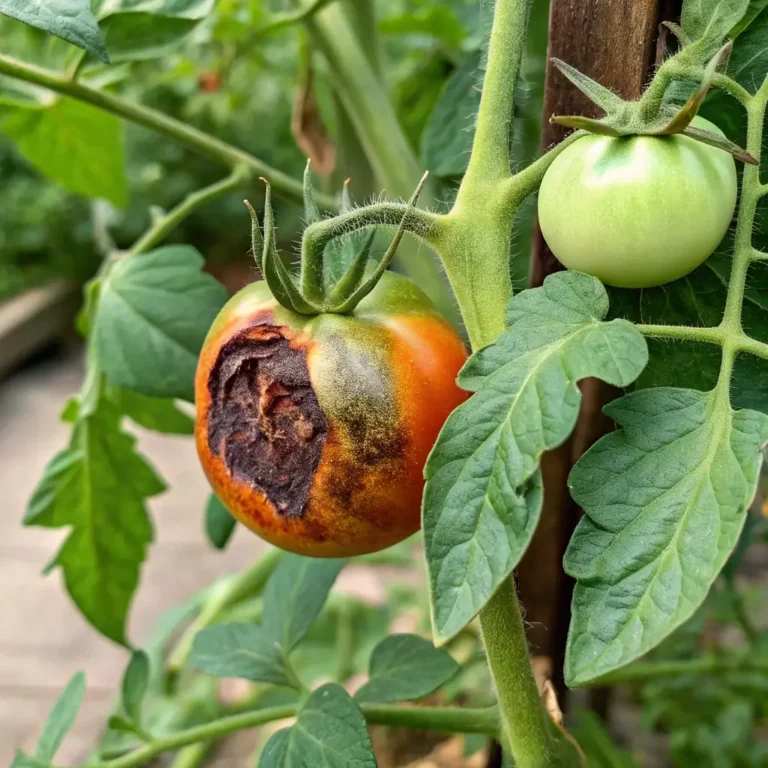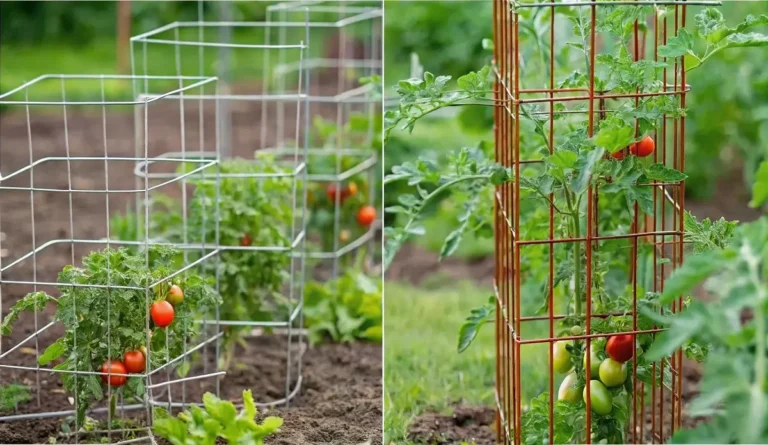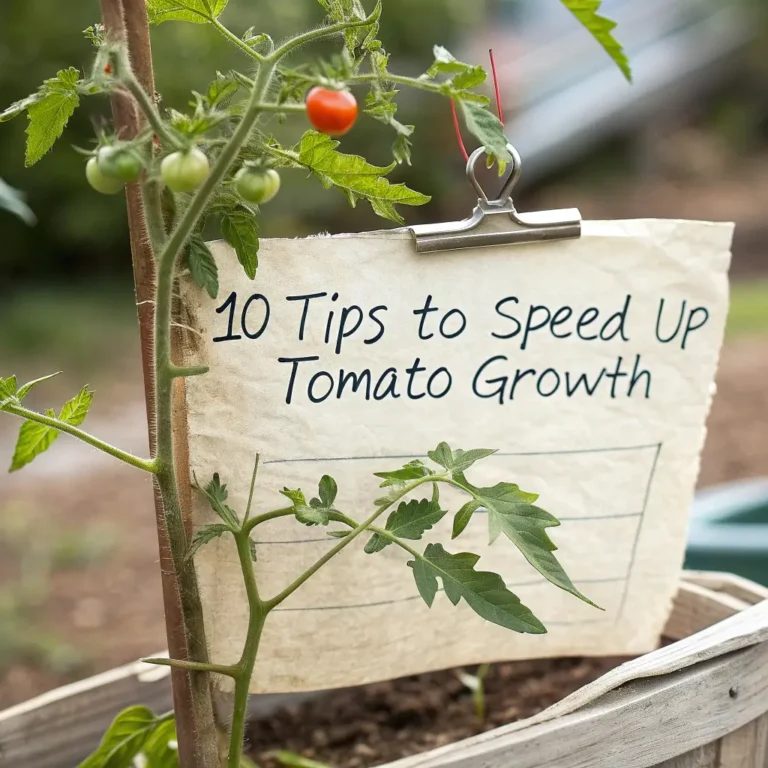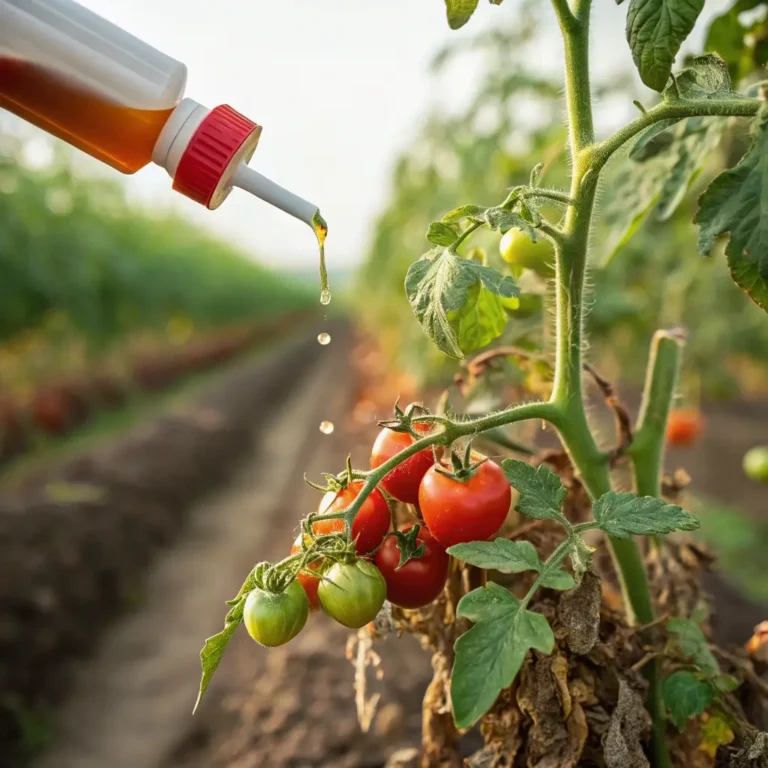What is The Best Time to Plant Tomatoes? 5 Tips to Know
Table of Contents
Introduction
Did you know that planting tomatoes at the wrong time can reduce your yield by up to 60%? While many gardeners follow the old adage of waiting until after the last frost, timing tomato planting involves much more precision than simply watching the calendar. Understanding what is the best time to plant tomatoes can make the difference between a bountiful harvest and a disappointing growing season. The perfect timing depends on your climate zone, soil temperature, and even the specific tomato varieties you’re growing. Let’s explore the science behind successful tomato planting and the five essential timing tips that will transform your garden this season.
Essential Gardening Supplies
Before determining the best time to plant tomatoes, gather these crucial supplies:
- Healthy tomato seedlings or high-quality seeds
- Nutrient-rich potting soil or garden soil amended with compost
- Soil thermometer (crucial for measuring ground temperature)
- Season extenders (row covers, wall o’ water, cloches) for early planting
- Organic fertilizer (preferably one formulated for tomatoes)
- Mulch (straw, grass clippings, or black plastic)
- Tomato cages or stakes for support
- Garden gloves and basic hand tools
- Garden journal for tracking planting dates and conditions
Substitution options: If you don’t have a soil thermometer, use an instant-read kitchen thermometer. Garden fabric can replace commercial row covers, and homemade compost is an excellent alternative to store-bought fertilizers.
Timing
Understanding the timing factors for planting tomatoes is essential for success:
- Seed starting indoors: 6-8 weeks before transplanting outdoors (approximately 40-56 days)
- Soil preparation: 2-3 weeks before planting (14-21 days)
- Hardening off seedlings: 7-10 days before transplanting
- Total time from seed to garden: 8-10 weeks (56-70 days)
This comprehensive approach saves you approximately 30% of the growing time compared to direct sowing outdoors, giving your tomatoes a significant head start in regions with shorter growing seasons.
Step-by-Step Instructions
Step 1: Determine Your Frost Dates
Check your local agricultural extension office or use online zone calculators to identify your region’s last spring frost date. This date serves as your baseline, but avoid treating it as an absolute—soil temperature matters more than calendar dates. Record these dates in your garden journal to establish patterns for future planting seasons.
Step 2: Monitor Soil Temperature
The scientifically optimal soil temperature for tomato planting is between 60-70°F (15-21°C) at a depth of 4 inches. Measure morning temperatures for several consecutive days, as this reading is most accurate. Planting in soil below 55°F dramatically slows root development and can lead to phosphorus deficiency, recognizable by purple leaf undersides.
Step 3: Prepare Your Transplants
If starting from seed, sow indoors 6-8 weeks before your anticipated planting date. Choose a warm location (70-75°F) for germination. When seedlings develop true leaves, transplant to larger containers. Begin hardening off one week before garden planting by gradually introducing plants to outdoor conditions.
Step 4: Choose the Right Day for Planting
Select an overcast, calm day with moderate temperatures for transplanting. Late afternoon planting reduces transplant shock by giving seedlings overnight to adjust before facing intense sunlight. Avoid planting during heatwaves or immediately before heavy rain forecasts.
Step 5: Plant Properly for Your Climate
In warmer regions (zones 8-10), plant tomatoes earlier and consider heat-tolerant varieties. In cooler regions (zones 3-6), use season extenders and choose shorter-season varieties. Regardless of region, plant seedlings deeply, burying 2/3 of the stem to encourage stronger root development.
Nutritional Information
Homegrown tomatoes offer exceptional nutritional benefits:
- Excellent source of vitamins C (40% of daily value per cup)
- Rich in vitamin K, potassium, and folate
- Contains lycopene, a powerful antioxidant linked to reduced heart disease risk
- Studies show organically grown tomatoes contain up to 50% more vitamin C than store-bought counterparts
Healthier Growing Alternatives
Maximize nutrition and sustainability with these modifications:
- Use organic growing methods to avoid pesticide residues
- Try grafted tomatoes for increased disease resistance and higher yields
- Grow determinate varieties in containers for limited spaces
- Implement companion planting (basil, marigolds, carrots) to naturally deter pests
- Consider growing heirloom varieties for unique flavors and genetic diversity
Serving Suggestions
Showcase your perfectly timed tomato harvest with these ideas:
- Create a visually stunning caprese salad with fresh basil
- Slow-roast Roma tomatoes to intensify flavors for winter storage
- Celebrate peak ripeness with a no-cook tomato sauce over fresh pasta
- Make your own tomato preserves, salsas, or sun-dried tomatoes
- Host a tomato tasting party featuring different varieties from your garden
Common Mistakes to Avoid
Prevent these frequent tomato planting pitfalls:
- Planting solely based on calendar date rather than soil temperature (reduces yield by up to 25%)
- Neglecting to harden off seedlings properly (increases transplant mortality by 40%)
- Planting too densely (optimal spacing is 24-36 inches for most varieties)
- Ignoring nighttime temperatures (temperatures below 50°F inhibit fruit set)
- Rushing to plant early without protection (frost can kill unprotected plants instantly)
Storing Tips for Your Harvest
Maximize your tomato harvest with proper storage:
- Store unripe tomatoes stem-side down at room temperature, never in the refrigerator
- For green tomatoes at season’s end, wrap individually in newspaper to ripen gradually
- Preserve excess harvest through freezing, canning, or dehydrating
- Create tomato sauce base for year-round use
- Save seeds from heirloom varieties for next season’s planting
Conclusion
Determining the best time to plant tomatoes involves much more than simply waiting for warm weather. By focusing on soil temperature, regional conditions, and proper preparation, you’ll significantly increase your chances of a successful harvest. Remember that patience in planting pays dividends in productivity—rushing to plant too early often results in stunted plants that produce less than those planted at the optimal time. Use these five essential timing tips as your guide, but don’t be afraid to experiment and keep detailed notes about what works best in your specific microclimate. What tomato varieties are you planning to grow this season? Share your experiences and questions in the comments below!
FAQs
How can I tell if my soil is warm enough for planting tomatoes without a thermometer?
If barefoot walking on the soil is comfortable and weeds are actively growing, soil temperatures are likely approaching 60°F. Another indicator is when lilacs are in full bloom or oak leaves are the size of a squirrel’s ear.
Can I plant tomatoes earlier if I use protection?
Yes! Using cloches, wall o’ water, or other season extenders can allow planting 2-3 weeks earlier than recommended. Just ensure protection remains during cold nights until temperatures consistently stay above 50°F.
What’s the difference in planting times for determinate vs. indeterminate tomatoes?
Both types have similar temperature requirements, but determinate varieties often mature faster. In short-season areas, determinate types may be preferable as they produce all their fruit within a condensed timeframe.
Should I adjust planting time based on tomato variety?
Absolutely. Cherry tomatoes tend to be more cold-tolerant and can be planted slightly earlier. Larger beefsteak varieties and longer-season heirlooms benefit from warmer soil and may need later planting in cooler regions.
If I miss the optimal planting window, is it too late to plant tomatoes?
Not necessarily! In most regions, tomatoes can be planted successfully until 12-14 weeks before the first fall frost. Late-planted tomatoes may produce smaller yields but can still be productive, especially with fast-maturing varieties.
